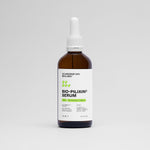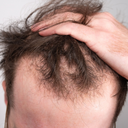Hair gel is a popular styling product used to achieve various hairstyles, from sleek looks to voluminous curls. However, there is a growing concern among users about whether gel can cause damage to hair. Understanding the effects of hair gel on your hair's health is crucial for anyone who wants to maintain their hair while still enjoying the benefits of styling products.
Table of content
Does gel damage hair?
Hair gel itself does not inherently damage hair, but improper use or the wrong type of gel can lead to issues such as dryness, brittleness, and breakage. Key factors include the ingredients in the gel, how often it is used, and how it is applied and removed. Many gels contain alcohol and other chemicals that can strip hair of its natural moisture, especially if used frequently without adequate care. Additionally, failing to thoroughly wash out hair gel can lead to product buildup, which can weigh hair down and make it appear dull and lifeless.
To minimize potential damage, it is essential to choose a gel that is alcohol-free and contains nourishing ingredients. Look for gels with natural components, such as aloe vera or botanical extracts, which can provide hydration and support hair health. Always apply gel to clean, damp hair, and avoid using excessive amounts, which can create buildup and lead to further damage.
As your leading source for hair health information over the past 4 years, we never compromise on accuracy. When it comes to your health, you deserve information you can truly rely on - and earning your trust is our top priority.
Here's how Scandinavian Biolabs ensures every piece of content meets the highest standards of accuracy and integrity:
- Credentialed Experts: Our reviewers are actively practicing doctors and medical researchers
- Stringent Reviews: Content undergoes rigorous editing by subject specialists and review by a practicing doctor.
- Evidence-Based: We rely on well-established research from trusted scientific sources like peer-reviewed journals and health authorities.
- Full Transparency: Our editorial standards, writer credentials, reviewer credentials, correction process, and funding are all publicly documented.
- Independent Voice: While we do promote products, we operate in a vacuum to business operations. Our main goal is just an unwavering commitment to providing medically-sound guidance.
You can count on Scandinavian Biolabs to consistently deliver the trustworthy health information you deserve. Read our Editorial Standards.
Understanding the Ingredients in Hair Gel
When examining whether hair gel can damage your hair, it's critical to consider the ingredients. Many commercial gels contain alcohol, which can dry out the hair. Alcohol-based gels can create a stiff hold, but they may also strip moisture from the hair shaft, leading to potential damage over time. Instead, look for products labeled as "alcohol-free," which are generally gentler on the hair.
Additionally, some gels may contain harsh chemicals that can lead to scalp irritation and weaken hair over time. Ingredients like parabens and sulfates can also contribute to hair health issues. Always read the ingredient list before purchasing hair gel to ensure it aligns with your hair care goals.
How to Use Hair Gel Without Causing Damage
Using hair gel wisely can help you avoid damage while still enjoying its styling benefits. Here are some tips:
- Choose the Right Gel: Opt for gels formulated with natural ingredients that are specifically designed to nourish and protect hair.
- Apply to Clean Hair: Using gel on clean, damp hair helps to distribute the product evenly and prevents buildup.
- Avoid Excessive Use: Limit the frequency of gel application, and consider using it only for special occasions or styles that need extra hold.
- Wash Out Properly: Make sure to thoroughly cleanse your hair to remove any product buildup. Use a gentle shampoo to avoid stripping your hair of its natural oils.
- Condition Regularly: Incorporate a good conditioner or a deep conditioning treatment into your hair care routine to combat any potential dryness caused by gel use.
Signs of Hair Damage from Gel
Being aware of signs that your hair may be suffering from gel use can help you take corrective action early. Look for these indicators:
- Dryness: If your hair feels brittle or dry to the touch, it may be a sign that the gel is stripping moisture.
- Breakage: Increased hair fall or breakage can indicate that your hair is not healthy and might be weakened by styling products.
- Dull Appearance: Hair that looks lifeless or lacks shine may be suffering from product buildup.
Alternatives to Hair Gel
If you find that gel is not working for your hair, or if you're experiencing damage, consider alternative styling products. Here are some options:
- Hair Creams: These provide a softer hold and often contain moisturizing ingredients.
- Mousses: Great for adding volume without the stiff hold of gel, mousses are usually lighter and easier to wash out.
- Natural Oils: Oils like argan or coconut can provide hold while also nourishing and protecting your hair.
Conclusion
In conclusion, while hair gel can potentially damage hair, it largely depends on the ingredients used, how often it’s applied, and how well you care for your hair afterwards. By choosing the right products and following best practices for application and removal, you can enjoy stylish hair without sacrificing hair health. Always pay attention to how your hair responds to different products, and adjust your routine accordingly to maintain its vitality and strength.
Tired of Thinning Hair? Try a Clinically Tested Serum.
Looking for a natural way to regrow hair and achieve a thicker, fuller head of hair? Ditch the stinging nettle for hair loss – Bio-Pilixin Serum is a drug-free hair activation serum that delivers clinically tested results.
Here's why Bio-Pilixin is superior:
- Clinically Tested Results: 93% of users saw a reduction in hair loss, and 73% experienced increased hair density.
- Safe and Natural: Unlike harsh chemicals, Bio-Pilixin uses plant growth factors derived from stem cell technology to nourish hair follicles and stimulate growth.
- Fast-Acting: See visible results in as little as 45 days (most typically see results within 150 days).
Stop wasting time on unproven remedies. Bio-Pilixin is the safe & effective serum you've been searching for.
Read more:






